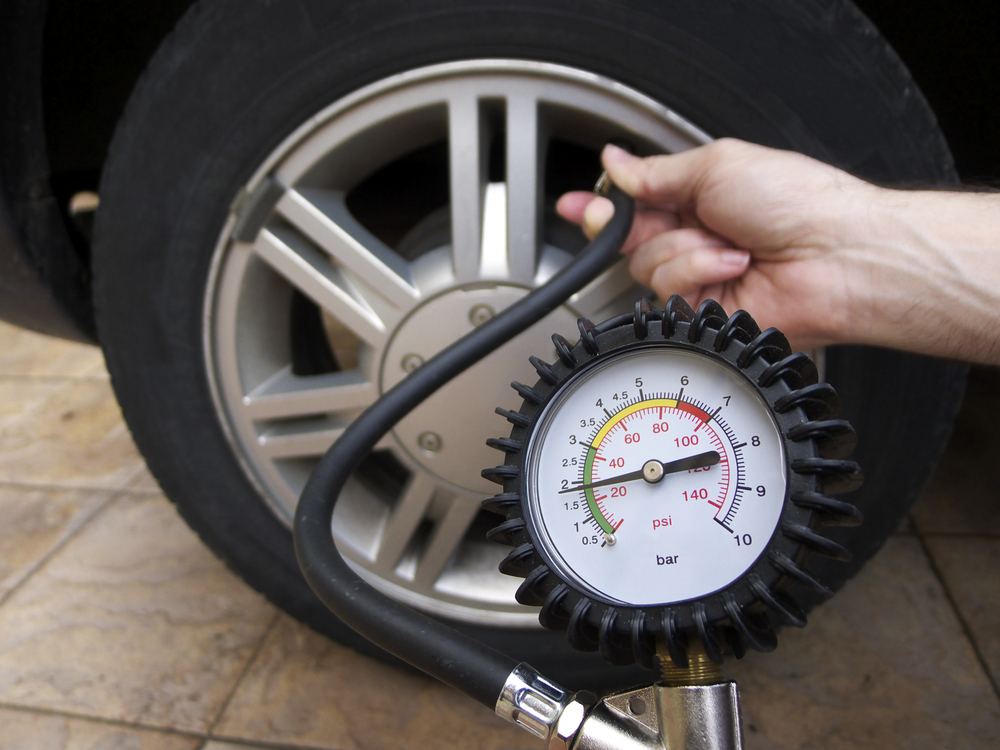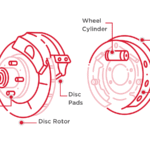
How to Reset Tyre Pressure on a Renault Captur: Complete TPMS Reset & Warning Light Guide

- Understanding the Renault Captur Tyre Pressure Monitoring System (TPMS)
- When You Should Reset the Tyre Pressure Light
- Correct Tyre Pressure for the Renault Captur
- Step-by-Step Guide: How to Reset Tyre Pressure on a Renault Captur
- Alternate Reset Method for Older Renault Captur Models (Without Steering Wheel Menu Control)
- How to Clear the Tyre Pressure Warning Light on a Renault Captur
- What ‘SET TPW’ Means on the Renault Captur
- Why Tyre Pressure Reset Is Important
- Common Mistakes When Resetting Tyre Pressure on a Captur
- Tyre Pressure Reset for Captur with R-Link or EasyLink System
- Tyre Pressure Sensor Locations and How the System Works
- Simple Troubleshooting Before Visiting a Workshop
- Recommended Tyre Pressure Values: Quick Reference Table
- Comprehensive Tyre Pressure Reset Procedure (Step-by-Step Quick Summary)
- Frequently Asked Questions
Understanding the Renault Captur Tyre Pressure Monitoring System (TPMS)
The Renault Captur’s TPMS constantly measures tyre pressure and alerts us when one or more tyres fall outside the safe range. When that warning light stays on after adjusting tyre pressures, the system needs a manual reset to recalibrate the stored values. Getting this right keeps the Captur stable, efficient, and predictable on every journey.
When You Should Reset the Tyre Pressure Light
Resetting the Captur’s tyre pressure system becomes essential when:
- We inflate or deflate any tyre
- We perform a tyre rotation or replacement
- Seasonal temperature changes affect pressure
- The warning light stays on even after correcting pressures
- The dashboard displays ‘Check Tyre Pressure’ or ‘Tyre Pressure Fault’
Correct Tyre Pressure for the Renault Captur
The recommended pressure for most Renault Captur versions is:
- 32 PSI (2.2 bar) for normal driving conditions
- Slightly higher pressures may be recommended when fully loaded
Always confirm your exact values on the driver’s-side door label.
Step-by-Step Guide: How to Reset Tyre Pressure on a Renault Captur
This is the most accurate, universal reset method covering Captur I (2013–2019) and Captur II (2020–present).
1. Switch on the ignition
Start the engine or press the Start/Stop button without starting the engine, depending on your model.
Press MENU on the steering wheel until the central display shows Vehicle Settings.
Use the scroll buttons to reach:
“Tyre Pressure” → “Tyre Pressure Reset”
4. Press OK to confirm
Once the reset option appears, press OK and hold until the message:
“Reset in progress”
is displayed.
5. Start driving
Drive at over 25 mph (40 km/h) for 5–10 minutes so the system can relearn the tyre pressures. The TPMS light should turn off on its own.
Some earlier Captur versions use a dashboard button rather than steering-wheel controls.
1. Ensure all tyres are set to the recommended PSI
Do not attempt a reset until all tyres are correctly inflated.
You may be interested in reading Renault Captur Tyre Size Guide (2013–2018): Complete Wheel & Tyre Fitment Chart
Renault Captur Tyre Size Guide (2013–2018): Complete Wheel & Tyre Fitment Chart2. Power the ignition
Turn the key or press Start/Stop.
Hold it for several seconds until a configuration screen appears.
Use short presses to scroll until you reach the TPMS reset option.
5. Confirm and wait
Hold the same button to confirm. The warning light will disappear once the system completes calibration.
How to Clear the Tyre Pressure Warning Light on a Renault Captur
If the tyre pressure light remains illuminated, follow this sequence:
- Recheck all four tyre pressures (and the spare if applicable).
- Inflate each tyre to the exact values stated on the door sticker.
- Reset the TPMS using either the menu method or the dashboard-button method.
- Drive for several minutes at road speed.
- If the light continues—check for:
- A puncture or slow leak
- A faulty tyre pressure sensor
- A damaged valve stem
- A recently replaced tyre without system reset
A persistent warning usually points to a sensor battery issue.
What ‘SET TPW’ Means on the Renault Captur
Some Captur variants display a message like SET TPW, which simply refers to the system’s prompt to set or initialise tyre pressure values. It is not an accessory package or additional feature; it indicates that the system requires a reset after pressure changes.
Why Tyre Pressure Reset Is Important
Resetting the TPMS ensures:
- Stable steering response
- Improved braking safety
- Reduced fuel consumption
- Longer tyre lifespan
- Accurate system alerts in future
Driving with incorrect pressure values saved in the system can mask real punctures or trigger false warnings.
Common Mistakes When Resetting Tyre Pressure on a Captur
Avoid these frequently overlooked issues:
Resetting before adjusting pressures
The TPMS stores incorrect baseline values and keeps warning you.
Inflating tyres unevenly
A difference as small as 2 PSI can trigger new warnings.
You may be interested in reading Renault Captur Tyre Size Guide (2013–2018): Complete Wheel & Tyre Fitment Chart
Renault Captur Tyre Size Guide (2013–2018): Complete Wheel & Tyre Fitment Chart Braking System Fault on Renault: Full Diagnostic, Causes, and Fix Guide
Braking System Fault on Renault: Full Diagnostic, Causes, and Fix GuideAttempting reset while stationary
The Captur must remain in motion for the TPMS to validate new data.
Ignoring seasonal pressure drops
Cold weather reduces PSI; the system detects this as a fault.
Tyre Pressure Reset for Captur with R-Link or EasyLink System
Newer infotainment units have slightly updated menus.
Accessing the TPMS Reset via R-Link
- Press Vehicle on the touchscreen
- Select Tyre Pressure
- Press “Set Current Pressures as Reference”
- Confirm and drive
Accessing via EasyLink (2020+)
- Tap Settings
- Navigate to Vehicle
- Choose Tyre Pressure Monitor
- Select Reset
- Confirm
Tyre Pressure Sensor Locations and How the System Works
Each wheel contains a direct TPMS sensor measuring pressure and temperature. The sensors transmit data every few seconds to the onboard computer.
Sensor Failures That Can Trigger Warning Lights
- Dead sensor battery (common after 6–10 years)
- Corroded valve base
- Damage during tyre replacement
- Software miscommunication
Simple Troubleshooting Before Visiting a Workshop
1. Reinflate to door-sticker PSI
Do not rely on fuel-station gauges—many are inaccurate.
2. Hard reset by disconnecting the battery
On rare occasions, leaving the battery disconnected for 10 minutes forces a module reboot.
3. Swap tyres to check for faulty sensors
A warning that follows one tyre confirms sensor failure.
Recommended Tyre Pressure Values: Quick Reference Table
| Renault Captur Version | Front PSI | Rear PSI |
|---|---|---|
| Captur I (2013–2019) | 32 PSI | 32 PSI |
| Captur II (2020–2024) | 32 PSI | 30–32 PSI depending on load |
| Fully Loaded | +2 PSI | +2 PSI |
Comprehensive Tyre Pressure Reset Procedure (Step-by-Step Quick Summary)
- Set all tyres to correct PSI
- Power the ignition
- Press MENU → Vehicle → Tyre Pressure
- Select Reset
- Confirm with OK
- Drive to complete calibration
Frequently Asked Questions
1. How do I reset the tyre pressure on a Renault Captur?
Use the steering-wheel menu or dashboard button, select Tyre Pressure Reset, confirm, then drive at over 25 mph for several minutes.
2. Why does my tyre pressure light stay on after inflating tyres?
Either the TPMS wasn’t reset, a tyre still has low pressure, or a sensor is malfunctioning.
3. Can I reset the Captur TPMS without driving?
No. The system requires movement to validate new tyre pressure readings.
4. What is the correct PSI for Renault Captur tyres?
Most models require 32 PSI, but always refer to the sticker on the driver’s door.
5. What does SET TPW mean in the Captur?
It signals that the TPMS needs to store new baseline tyre pressures after adjustments.
You may be interested in reading Renault Captur Tyre Size Guide (2013–2018): Complete Wheel & Tyre Fitment Chart
Renault Captur Tyre Size Guide (2013–2018): Complete Wheel & Tyre Fitment Chart Braking System Fault on Renault: Full Diagnostic, Causes, and Fix Guide
Braking System Fault on Renault: Full Diagnostic, Causes, and Fix Guide Renault Captur Boot Space: Complete Dimensions, Practicality & Luggage Capacity Guide
Renault Captur Boot Space: Complete Dimensions, Practicality & Luggage Capacity GuideIf you want to know other articles similar to How to Reset Tyre Pressure on a Renault Captur: Complete TPMS Reset & Warning Light Guide you can visit the category Service and Parts.
Deja una respuesta




More content of your interest